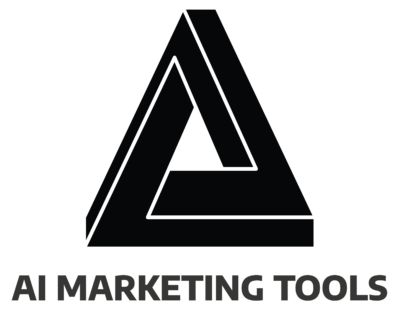
The advent of AI-driven chatbots has revolutionized the landscape of customer interaction, elevating marketing strategies into realms previously unimagined.
These ingenious digital assistants blend advanced technology with personalized conversation, offering businesses from clothing to financial services an unprecedented capacity for enhancing customer engagement and streamlining lead generation.
As they navigate through the complexities of human behavior, chatbots are becoming essential assets in transforming customer experience into opportunities for increased revenue.
They are not just a trend; they’re a transformative force in the way brands connect with their audience.
Keep reading to discover the innovative strategies that harness the power of AI chatbots, turning every chat into a stepping stone toward marketing success.
Key Takeaways
- AI Chatbots Enhance Marketing Strategies With Personalized, Real-Time Customer Engagement
- Strategic Deployment of Chatbots Across Various Platforms Ensures a Cohesive and Branded Omnichannel Experience
- Continuous Data Analysis and User Feedback Are Critical for Optimizing Chatbot Interactions and Performance
- Maintaining User Privacy and Compliance With Regulations Is Essential in Building Trust in Chatbot Communications
- Hybrid Systems That Combine AI Efficiency With Human Judgment Offer a Balanced Approach to Complex Customer Inquiries
Understanding AI-Powered Chatbots in Marketing

In the landscape of digital engagement, chatbots, powered by artificial intelligence, emerge as pivotal tools in orchestrating marketing strategies that resonate with the dynamism of modern consumer interactions.
As businesses aim to foster conversation and exchange knowledge more effectively, the transformative progression of chatbot technology springs forth, propelling promotional efforts well beyond traditional confines.
A meticulous examination of chatbot marketing reveals a tapestry of innovation where intricacies of customer behavior, merged with AI’s cognitive capabilities, redefine marketing efficiency—ushering in an era where the potency of each customer interaction is amplified to unprecedented levels.
Defining Chatbot Marketing for AI Promotion
In the realm of digital commerce, the concept of chatbot marketing gains traction as a strategic pillar, leveraging AI sophistication to craft experiences that resonate with clientele. Chatbots serve as the intersection where technology meets the conversational essence of human interaction, providing marketers with newfound agility in customer engagement.
Essentially, this facet of marketing automation harnesses the interactive nature of chatbots to conduct targeted advertising, gather client insights, and nurture leads toward valuable conversions. These intelligent computer programs simulate human conversation with finesse that not only scales customer service capabilities but also extends personalized marketing into every dialogue.
Exploring the Evolution of Chatbots in Marketing
The chatbot phenomenon has shifted from a novel feature on a landing page to a sophisticated participant in the dance of marketing strategy. Initial iterations, offering little beyond scripted responses, have blossomed into entities brimming with machine learning and natural language processing capabilities, enabling a near-human level of user experience and conversation.
With relentless evolution, chatbots are now indispensable assets in the customer journey, integral to omnichannel strategies that ensure consistent brand messaging across mobile apps, social media, and web chats. This trajectory reflects the heightened expectation for intelligent customer service, emphasizing real-time engagement and insights historically confined to human-agent interactions.
Identifying the Role of AI in Chatbot Efficiency
Artificial Intelligence fortifies chatbot efficiency by infusing a layer of cognitive understanding within each interaction. Intelligence manifests in the chatbot’s ability to dissect and respond to user queries in a way that mimics human consultants, bolstering the perception of brand credibility and nurturing customer satisfaction.
This elevation in service proficiency paves the way for intricate personalization, with AI-powered chatbots tailoring conversations to mirror individual customer profiles and preferences. The result is a more meaningful and effective engagement, not only addressing user inquiries but anticipating needs, driving upselling, and solidifying customer loyalty.
- AI enhances chatbot capabilities, simulating human-like interactions.
- Personalization through AI leads to more relevant and impactful user engagements.
- Anticipatory conversation enabled by AI augments customer retention and upselling opportunities.
Crafting Conversational Strategies for Chatbots

Navigating the intricacies of chatbot marketing requires a strategic approach centered around crafting conversations that are as intuitive as they are insightful.
This entails setting clear objectives for AI chatbot interactions, designing dialogue flows that actively engage users and enriching communications with a personal touch.
Cutting-edge chatbots transcend mere script-following automatons, becoming pivotal in delivering a customer experience tailored to individual needs and preferences, establishing rapport, and ultimately fostering a positive brand connection.
Setting Objectives for AI Chatbot Interactions
When embarking on the integration of AI chatbots into a marketing strategy, clear objectives are paramount. A company must determine the goals of interaction, whether that is to streamline customer support, enhance lead generation, or drive personalized marketing efforts.
Defining the desired outcome shapers the narrative that chatbots will employ; a retail brand might channel its bot to focus on instant support and product recommendations, while an airline chatbot might prioritize booking assistance and loyalty program engagement. This focus sculpts the chatbot’s knowledge base and conversation flow, ensuring that each engagement aligns with the broader marketing strategy.
Designing Dialogue Flows to Engage Users
Within the sphere of conversational marketing, designing dialogue flows stands as a vital element that determines the depth of user engagement. It’s not solely about responding to inputs but creating a narrative that guides the customer naturally through the funnel, imparting knowledge while leading towards a desired outcome: satisfaction coupled with conversion.
The architecture of these dialogue flows hinges on an understanding of customer behavior and preferences, tailoring each branch of conversation to offer solutions and opportunities that resonate personally with the user. Strategically constructed, these pathways not only address immediate concerns but also unveil opportunities for targeted upselling and cross-promotion.
| User Intent | Chatbot Response | Upselling Opportunity |
|---|---|---|
| Seeking product information | Provides detailed product features | Suggests premium version |
| Looking for support | Offers troubleshooting assistance | Introduces related accessory |
| Asking about price | Delivers pricing tiers | Highlights value of bulk purchases |
Please note that the specific user intents, chatbot responses, and upselling opportunities are illustrative and should be tailored to the particular business case and target audience for effective results.
Personalizing Chatbot Communications
Personalized communication via chatbots stands as the cornerstone of effective marketing automation, with technology enabling a richness in user interactions that border on the bespoke. By analyzing past behavior and interactions, AI chatbots adjust their communication style and recommendations, ensuring each customer feels understood and valued, a practice pivotal in elevating the customer experience.
In the nuanced dance of digital marketing, AI chatbots extend the capacity for detailed customization, adapting conversation to align with individual user preferences and histories. This adept application of collected data fosters an environment of trust and relatability between the customer and the brand, paving the way for more profound customer engagement and satisfaction.
Integrating Chatbots Into Your Marketing Funnel

In the dynamic sphere of digital marketing, the incorporation of chatbots within the marketing funnel signifies a strategic milestone.
These AI-enabled conversational agents are not merely tools for interaction but pivotal in sculpting the customer journey and enhancing the efficacy of lead generation and nurturing techniques.
Seamlessly integrated into the marketing apparatus, chatbots offer a responsive and intelligent touchpoint at critical junctures, simultaneously gathering insights and guiding prospective clients toward well-defined marketing objectives.
With targeted chatbot campaigns, businesses can ensure each step of the customer journey is infused with personalized communication, incrementally building rapport and steering leads along a path that culminates in commercially fruitful engagements.
Mapping Out the Customer Journey for Chatbot Touchpoints
Strategic deployment of chatbot touchpoints within the customer journey mandates a well-charted map that highlights moments of potential engagement. At each identified touchpoint, an AI chatbot stands ready, offering personalized advice, actionable solutions, or support, thereby cementing the customer’s seamless progression towards the pivotal decision-making stage.
As customers navigate the labyrinthine paths from awareness to consideration, and ultimately to the point of purchase, chatbots cater to evolving needs with precision. They offer contextual responses and proactive assistance, ensuring that each interaction is both a reflection of the customer’s immediate intent and a constructive stride toward the end goal of conversion and brand loyalty.
Enhancing Lead Generation With AI Chatbots
AI chatbots are transforming the terrain of lead generation, equipping marketers with a potent tool to capture and nurture prospects with exceptional precision. By deploying chatbots across strategic points within the digital ecosystem, businesses can engage with potential clients in real time, addressing inquiries, and collecting key data points essential for refining the marketing approach.
Driven by advanced analytics, AI chatbots excel in qualifying leads through interactive dialogues, discerning the level of interest and intent behind user interactions. Their integration into the marketing funnel serves not only to streamline the lead-capturing process but also to provide a swift, responsive medium for cultivating initial interest into actionable business opportunities.
Nurturing Leads With Targeted Chatbot Campaigns
Targeted chatbot campaigns represent a quantum leap toward nurturing leads with unprecedented precision. By engaging in informed conversations, these chatbots tailor approaches based on individual lead profiles, effectively facilitating progression through the sales funnel.
- Adaptive conversation aids in understanding and responding to customer queries.
- Strategically designed prompts guide leads toward solutions and services.
- Real-time data analysis allows for the optimization of ongoing conversations.
Chatbots, imbued with advanced machine learning, evolve with each interaction, sharpening the finesse of their campaigns. They delve into personalized experiences that not only educate potential clients but also frame products and services within the narrative of the customer’s requirements and pain points.
Analyzing and Optimizing Chatbot Performance

In the vanguard of digital transformation, businesses continuously seek to optimize the tools at their disposal, with AI-powered chatbots taking center stage.
As organizations refine their marketing strategies, a comprehensive understanding of chatbot performance is crucial.
By analyzing performance data and listening to user feedback, companies aim to understand what makes conversations successful. They strive to translate these insights into measurable outcomes, ensuring that interactions lead to tangible and positive results.
The pursuit of optimizing chatbot efficacy involves meticulously measuring key performance metrics, iteratively refining responses based on user feedback, and engaging in A/B testing to enhance conversation paths toward superior conversion rates.
This proactive engagement with data and user experience shapes the effectiveness of chatbots in driving targeted marketing campaigns and bolstering customer relations.
Measuring Chatbot Success With Key Metrics
Key performance metrics act as the compass guiding the continual improvement of AI chatbot interactions. Metrics such as conversation rate, user retention, and satisfaction scores offer tangible insights into how effectively chatbots foster user engagement and contribute to achieving strategic marketing goals.
Conversion analytics shed light on the aptitude of chatbots to transform casual conversations into revenue-generating opportunities. By scrutinizing drop-off rates and customer feedback within these digital dialogues, businesses can pinpoint and enhance aspects of the chatbot experience that drive a substantial return on investment.
Using Feedback to Fine-Tune Chatbot Responses
In the pursuit of marketing excellence, feedback is the cornerstone for refining chatbot responses. Active analysis of customer interactions provides the raw data that, when skillfully applied, can turn a competent chatbot into an exceptional virtual assistant – one that represents a brand with precision and personal touch.
As chatbots interact with users, their conversational capabilities are honed through the assessment and integration of user feedback. By systematically incorporating client insights, chatbots can adapt their dialogue, improving clarity, relevance, and responsiveness to enhance the overall customer experience:
- Feedback steers chatbot narrative adjustments for clearer communication.
- User insights trigger revisions in response algorithms to better match customer expectations.
- Continuous interaction refinements elevate the effectiveness of chatbots in customer engagement.
A/B Testing Strategies for Chatbot Conversion Optimization
A/B testing emerges as a crucial technique in optimizing chatbot conversion rates, serving as a powerful mechanism for discerning the most effective conversation strategies. By implementing controlled tests that present varied conversational scripts, imagery, or call-to-action messages to different user segments, businesses can analyze comparative data to ascertain which chatbot elements most significantly enhance user engagement and lead to conversions.
Businesses employing A/B testing for chatbot optimization effectively fine-tune the user experience, leading to a more precise adaptation of chatbots to user behavior and preferences. Through this comparative approach, steadily incremental improvements are integrated into the chatbot’s operational model, enhancing the alignment between the chatbot’s conversational flow and the user’s expectations, thus optimizing the path to conversion.
- Implement A/B testing by varying chatbot elements to different user groups.
- Analyze the resulting data to determine which variants improve engagement and conversions.
- Integrate successful elements for a chatbot experience better tailored to user preferences.
Leveraging Chatbots for Omni-Channel Marketing

In today’s competitive market landscape, the integration of AI promotion through chatbot marketing strategies is not just beneficial; it’s essential for a unified and impactful customer journey.
Masterly executed AI chatbots form the backbone of an omnichannel approach, seamlessly reinforcing brand messaging across various platforms and customer touchpoints.
Recognizing the integral role of consistent communication, businesses are incorporating chatbots to forge a coherent brand narrative, expand their presence on social media, and cross-promote products, ensuring a cohesive experience that captivates and converts at every stage of the consumer’s path.
Unifying Brand Messaging Across Chatbot Platforms
Guaranteeing consistent brand messaging through chatbot platforms is fundamental to an omnichannel marketing strategy that stands out in today’s market. Businesses must strive to ensure that their chatbots, regardless of platform, convey the core messages and values that define their brand identity.
This consistency reinforces brand recognition and fortifies customer loyalty, as the streamlined messaging echoes across the diverse array of customer interaction points: from a clothing brand’s mobile app to a financial service provider’s customer support on social media:
| Platform | Brand Message Delivery | Customer Interaction Point |
|---|---|---|
| Mobile App | Intuitive shopping experience with personalized recommendations | Clothing Brand |
| Social Media | 24/7 assistance and financial advice | Financial Services |
| Email Newsletter | Exclusive deals and insightful content | Retail Promotions |
Extending AI Chatbot Presence to Social Media
Expanding chatbot capabilities to social media marks a pivotal step for companies aiming to harness the full potential of their AI marketing strategies. By occupying platforms where customers actively engage, chatbots elevate brand presence, facilitate immediate customer support, and drive user engagement with timely, context-aware responses.
Social media channels offer a fertile ground for deploying AI chatbots that personify brand attributes while efficiently navigating the nuances of personalization and customer interaction. Here, chatbots become versatile conduits for offers, brand narrative, and customer relationship management, fostering meaningful connections with diverse audiences.
| Social Media Platform | Chatbot Function | Impact on Customer Engagement |
|---|---|---|
| Instant customer service and promotional announcements | Heightened response rates and customer satisfaction | |
| Product discovery and visual storytelling | Increased interaction through direct messaging and comments | |
| Real-time brand updates and crisis management | Quick resolution of customer concerns and spreading of brand news |
Cross-Promoting Products With Chatbots Across Channels
Chatbots, embedded within an omnichannel marketing framework, excel at cross-promoting products by engaging customers with tailored suggestions that spark interest across different channels. These AI-powered entities capitalize on their ability to analyze customer data in real-time, offering well-timed product recommendations that align with the consumer’s current interaction and recent purchase history.
By serving up relevant cross-promotional content, a chatbot effortlessly guides customers through a seamlessly integrated buying experience, whether they’re browsing a brand’s website, scrolling through a social media feed, or engaging via a mobile app. This strategy not only ensures consistent touchpoints but also amplifies the potential for increasing average order value and enhancing overall brand engagement.
Overcoming Challenges in Chatbot Marketing

In the vanguard of marketing innovation, AI chatbots drive promotional campaigns to new summits, yet their ascent isn’t without challenges.
As safeguarding consumer privacy emerges as an ever-present concern, businesses must rigorously apply AI technologies that prioritize user confidentiality while navigating the current of compliance and ethics in chatbot conversations.
Beyond these imperatives, the complexity of human inquiries demands a harmony between AI capabilities and human discernment, ushering in hybrid systems that promise a balance of efficiency and accuracy.
Thus, the key to harnessing chatbots effectively lies in overcoming these hurdles to cultivate trust and refine the sophistication of customer interactions.
Addressing Consumer Privacy Concerns With AI Chatbots
In the intricate ballet of technology and user privacy, AI chatbots raise inevitable concerns regarding the security and handling of personal data. As custodians of consumer trust, enterprises deploying chatbots adopt rigorous privacy policies, ensuring that data collection, storage, and processing adhere to strict regulatory standards, and that the rights of users are safeguarded.
With chatbots becoming a staple in customer service, organizations underscore transparency by informing users about the nature of data gathered through chatbot conversations and the measures in place to protect it. This clarity strengthens consumer confidence, fostering an environment where AI chatbots are welcomed as trusted intermediaries in the exchange of sensitive information.
Ensuring Compliance and Ethics in Chatbot Conversations
In the digital age, where compliance and ethics play a crucial role in customer relations, chatbots programmed with regulatory knowledge become essential. They must not only respond dynamically to customer inquiries but also operate within the boundaries of legal frameworks and privacy mandates to preserve trust and integrity.
When programming AI chatbots, designers must incorporate stringent compliance protocols and ethical decision trees. This ensures that every chatbot-facilitated conversation honors the nuanced requirements of industry standards and user consent:
- Chatbots are equipped with mechanisms to recognize and respect user data preferences.
- Deployment of chatbots adheres to international privacy laws, such as GDPR and CCPA.
- Continuous updates are applied to chatbot systems to align with evolving compliance regulations.
Handling Complex Queries With Hybrid Human-Ai Systems
Hybrid human-AI systems are essential for tackling the labyrinth that complex customer inquiries present, seamlessly bridging the gap where even the most advanced AI might falter. This blend of human empathy and AI efficiency guarantees that each customer query, regardless of its intricacy, is addressed with accuracy and a personal touch, ensuring a harmonious customer experience.
Introducing human oversight into the AI-enabled framework enables a swift transition from chatbot to human support for queries that exceed programmed parameters. These systems reflect an understanding that, although AI provides a robust foundation for customer interaction, the discernment inherent in human judgment is invaluable for nuanced issues, thus preserving trust and solution quality.
Conclusion
Maximizing the potential of AI in marketing through chatbot strategies is critical in today’s fast-paced digital environment.
AI-powered chatbots enable businesses to engage with consumers on a more personal level, tailoring conversations, and providing instant support across various platforms, including social media.
Intelligent chatbots, equipped with machine learning, play a pivotal role in lead generation and nurturing, guiding customers smoothly through the marketing funnel toward conversion while collecting valuable insights.
However, businesses must also navigate challenges such as maintaining consumer privacy and ethical communication standards, which require incorporating clear privacy policies and compliance measures.
By successfully overcoming these hurdles, and with hybrid human-AI systems in place to handle complex queries, chatbots can significantly elevate marketing strategies, ultimately enhancing customer relations and driving business growth.

Comments